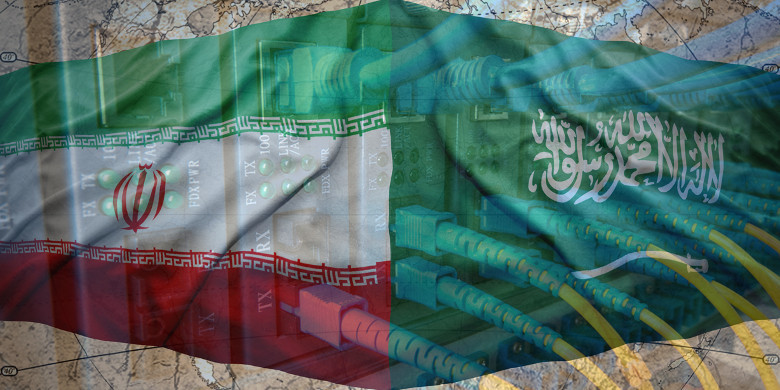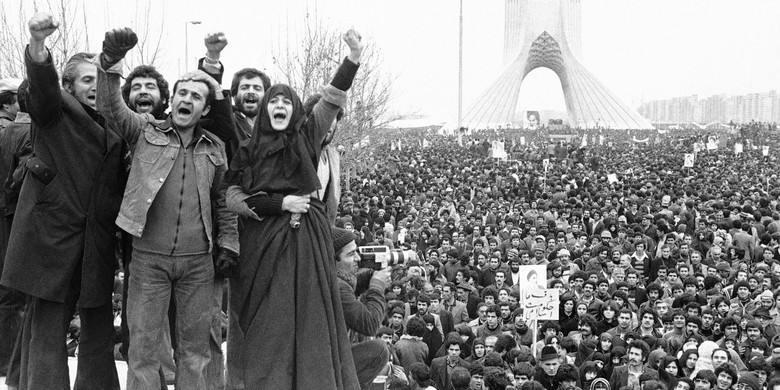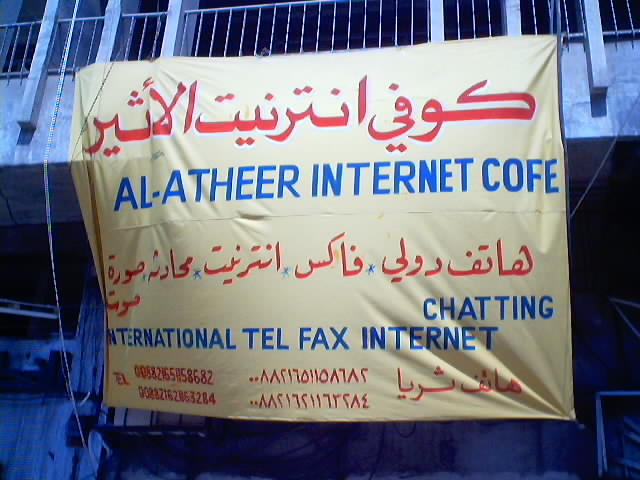Internet around the world: Iran, Iraq, Saudi Arabia

We continue our series of publications "Internet around the World" (previous issues: North and South Korea , China and Taiwan ). This time, such countries as Iran, Iraq and Saudi Arabia are in the focus of attention.
Iran
Iran is Russia's southern neighbor, part of its northern border runs along the coast of the Caspian Sea. Since 1979, after the overthrow of the monarchy and the establishment of a theocratic regime, Iran has been one of the main political antagonists of the United States, which has led to many years of political and economic isolation of the country.

')
Nevertheless, all this time the country found opportunities to develop its own high-tech sector. For example, even under the most severe restrictions on the supply of equipment and the export of technology, Iran is developing missile weapons. And the Iranian nuclear program has been the main political horror for many years. In general, the country is considered one of the most technologically and industrialized countries in the Middle East.
The first Internet channel appeared in Iran in 1992, and the main users were scientists and research institutes. National Top Level Domain of Iran - ir. In 1995, students began to gain access to the Internet, which led to an explosive growth in the popularity of this service and the proliferation of Internet cafes that connected to the main channels via satellite dishes.
Censorship
However, the authorities were absolutely not satisfied with the mass and uncontrolled access of the population to the network: censorship and tight control over ideology, morality and culture are still an integral part of modern Iran. Therefore, in 2001, official rules for censorship and network access control were introduced . In particular, all providers and Internet cafes should be licensed to provide relevant services. The license for Internet cafes can be obtained only by married / married owners who are Iranian citizens and are Muslims. On the providers side, content is necessarily filtered.

In 2005, the censorship in the network even more tightened. In the Iranian segment of the Internet, any criticism of the decisions and actions of the authorities, the revolution of 1979, Islam, propaganda of bad habits and "immoral" behavior, human rights publications, and so on, is prohibited. Moreover, punishments can be very severe, up to and including charges of high treason and subsequent execution. In 2013, Iran blocked access to a huge number of sites, including the most popular social networks, Youtube, news resources, blog services and so on. All search queries are subject to total filtering, and the list of inappropriate topics is very large. Private individuals were prohibited from accessing the Internet at speeds above 128 Kbps. Prohibited the use of encryption, VPN, HTTPS. Internet café users must provide their passport information, and owners must keep this information for six months.

In addition, in 2005, a program was launched to create a national intranet like the North Korean Kwangmyon - the National Information Network . Finally, in 2012, a government Internet surveillance agency, the Supreme Council of Cyberspace , was created.
In general, Iranian Internet censorship is one of the toughest in the world. But in recent years, the international isolation of Iran is gradually weakening, which leads to some liberalization of life in the country. True, some initiatives take rather strange forms: in 2013, a national e-mail service was developed to replace foreign ones, within which all residents of the country had to assign personal mailboxes. There are also national search engines ( Yooz , Parsijoo ), TD Messenger messenger. There is e-commerce in the country, there are e -government and distance learning sites. The Sharif University of Technology has developed a national OS - Sharif Linux.
In 2016, 39 million people used the Internet in the country (about 49% of the population). About 80% of them are mobile users. According to data for 2014 , the fee for a 2-megabyte connection cost $ 5 per month, and the daily traffic was paid at about $ 0.6 per gigabyte. The most visited sites by data for 2016: Google, Parsijoo, Bing, Yooz.
Iraq
After the assassination of Saddam Hussein in 2006, which reigned since 1979, a guerilla war began against Iraq against the occupation forces. After the departure of the carriers of democracy in 2011, the terrorist organization known to all in Syria (banned in the Russian Federation) launched a civil war for power in the country that has not ended yet: part of the territory of Iraq is still under the control of terrorists .

As you understand, during the years of war and devastation Iraq was not at all up to the development of high technologies. In fact, today the entire economy - which, even in the best years of Hussein’s rule, was far from being “balanced and strong” - is based on oil production. The income level of the population is low, the telecommunications infrastructure is underdeveloped. However, the Internet in Iraq is. The national top-level domain is .iq. The number of users is less than 5 million people (13% of the population). And despite all the hardships, this is a huge step forward for the country, because under Hussein, only the elite had access to the Internet: in 2000, there were about 12,500 users in Iraq. Today, the cost of an ADSL / cable connection varies in the range of $ 30-60, at a connection speed of 512 Kbps - 2 Mbps . Also in large cities there are Internet cafes.



There is no clear evidence of Internet censorship, although this does not mean that it does not exist. Almost certainly there is, it just does not carry such an obvious and global scale. Also in Iraq, it is very unusual for children not to be charged for school exams: in May 2016, they decided to turn off the Internet throughout the country for three days for three hours. By the way, such a “knight's step” the Iraqi authorities have already made for the second time.
Saudi Arabia
The Kingdom of Saudi Arabia is located opposite Iran, on the southern coast of the Persian Gulf. The country occupies almost 80% of the territory of the Arabian Peninsula, and for the most part consists of semi-desert and desert areas. This is one of the hottest and driest countries, so the vast majority of the population is concentrated in large cities on the shores of the Persian Gulf and the Red Sea. So what is the benefit of civilization, as access to the Internet, there is not all over Saudi Arabia.

The national top-level domain - .sa - appeared in 1994. However, technically, the Internet became available only in 1999. In 2001, ADSL Internet came to Saudi Arabia.
Today there are several providers in the kingdom, the largest and oldest of which is STC ( Saudi Telecom Company ). Somewhere before 2004, STC was a monopolist in the telecommunications market. However, the company is still the sole owner of telephone lines, so STC receives double payment from all ADSL users: first, people pay to activate the ADSL service on the telephone line, and then Internet service providers pay to rent lines.
Despite the relatively late spread of the Internet in Saudi Arabia, the number of users has grown rapidly . In 1999 there were about 100,000 users, in 2001 - 1 million, at the end of 2013 - 16.5 million (55% of the population). According to the data for 2016, about 20.8 million people use the Internet (65% of the population).
As for prices and access speed, in 2011 the situation was as follows:
| Speed | Cost of |
| 2 Mbps | $ 40 |
| 20 Mbps | $ 66 |
| 40 Mbps | $ 80 |
| 100 Mbps | $ 120 |
| 200 Mbps | $ 200 |
Censorship
The Kingdom of Saudi Arabia is an absolute theocratic monarchy, and very many areas of life in the country are determined by the decrees of the king and princes. The ruling dynasty established quite strict rules and restrictions in Saudi Arabia, including morality, education, ideology and control over the dissemination of information. So it is not surprising that book publishing, all media and Internet access are censored. The Ministry of the Interior is responsible for this.

Formally, Internet censorship appeared in Saudi Arabia in February 2001. But in fact, objectionable sites began to ban almost as soon as the country had access to the Internet. Today, all Internet traffic in the kingdom passes through a system of proxy servers located in the King Abdulaziz science and technology center. Here, filters are applied to traffic based on black lists of sites containing “immoral” materials (mainly pornography, LGBT support and gambling), as well as sites containing objectionable political and religious materials. For example, many articles from the English and Arabic versions of Wikipedia are blocked. It is also believed that the proxy servers are not only filtering, but also analyzing search queries in order to ascertain the current mood among the inhabitants of the kingdom.
In general, it cannot be said that censorship in the Saudi Internet is brutal. Subjectively, it is stricter than in China , but many times softer than in Iran and North Korea . However, not a single country can compare with the latter in this respect today.
Source: https://habr.com/ru/post/401295/
All Articles